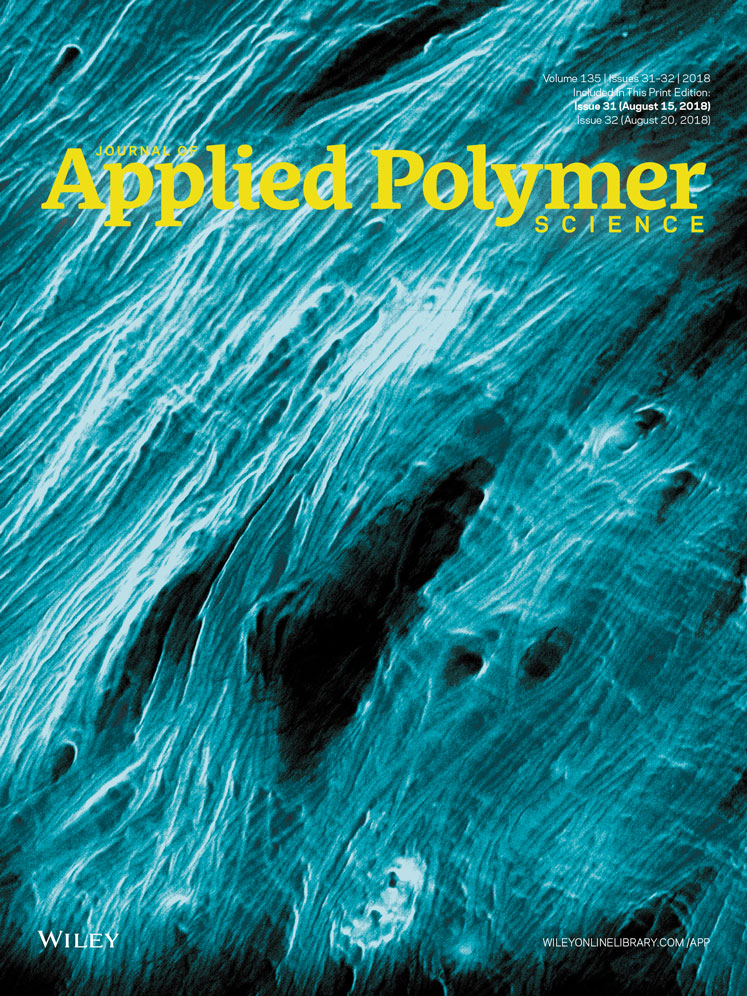Effect of graphite on the flame retardancy and thermal conductivity of P-N flame retarding PA6
ABSTRACT
In this article, a novel flame-retardant polyamide 6 (PA6) was prepared by introducing a halogen-free flame-retardant (OP1314). Graphite was added as a flame-retardant synergistic agent, and the flame retardancy was enhanced, especially the melt-dripping was forbidden and for the formula of PA6/12 wt % OP1314/5 wt % graphite, UL94 V-0 grade was reached. Meanwhile, the graphite is also an excellent thermal conductive filler and with the addition of 5 wt % graphite in the flame-retardant PA6 mixtures, the thermal conductivity (λ) rose to 1.2 W/mK which was nearly three times higher than the flame-retardant PA6. Due to the good flame retardancy and improved thermal conductivity, the material could be suitable for applications in electronic and electrical devices. © 2018 Wiley Periodicals, Inc. J. Appl. Polym. Sci. 2018, 135, 46559.




